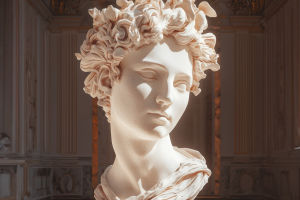Have you ever looked at an illustration and instantly understood what the characters were feeling or what might happen next—without a single word? That's the magic of visual storytelling.
Through color, composition, and character design, we can tell entire stories with just a few drawings.
Whether we're flipping through a picture book, scrolling through a comic panel, or watching a digital slideshow, illustrations help us see a story unfold.
So how do we create that kind of magic ourselves?
Start With a Clear Story Idea
Just like writing a short story, telling a visual story starts with a basic idea. Who is the main character? What is the problem they face? How does the story begin, rise, and end? It doesn't have to be complicated—it could be a fox looking for home, or a child chasing a balloon through a city. What matters is clarity. Once we know the emotional core of the story, we can begin shaping the scenes that bring it to life.
Sketch a Visual Outline
Instead of writing a script, we can draw a rough storyboard. This helps us plan the pacing, angles, and emotional beats of the story. Think of it like a comic panel or a slideshow: What happens first, then next, then finally? Each image should move the story forward—either by introducing something new, adding emotion, or revealing a twist. We can use arrows, quick notes, or even stick figures to map it out.
Characters Are the Heart
Our characters carry the emotional weight of the story, so their design matters. We don't need them to be overly detailed, but they should be expressive. A simple face with big eyes can show surprise. A slumped posture can suggest sadness. Clothing, shape, and movement can all add personality. When viewers feel something for the character, they care about what happens next—and that's what keeps the story alive.
Facial Expressions and Body Language
A good illustration captures feeling without needing dialogue. That's where facial expressions and posture come in. A character's wide eyes and raised shoulders can show fear. Crossed arms and turned backs may suggest conflict or frustration. We can think of each character as an actor on stage—what they're doing, not just what they look like, tells the story. The more specific the expression, the more relatable it becomes.
Use Color and Composition to Show Mood
Color is a powerful tool in visual storytelling. Soft pastels can make a scene feel calm or dreamy. Dark tones can add mystery or tension. Bright, bold colors might suggest excitement or joy. We can also use composition—where characters are placed, how close or far they are from the viewer, what's in focus—to guide emotion. For example, a small figure in a huge empty room can instantly show loneliness. All these choices help set the mood of each scene.
Transitions and Visual Flow
We don't just need strong individual pictures—we need to think about how one image leads into the next. Do we zoom in to show emotion? Zoom out to show a change in the world? Does the character travel left to right across the page to suggest progress? Visual flow helps readers follow the story naturally. It also lets us play with time, movement, and change without needing words.
Let the Silence Speak
One of the best things about illustration-based storytelling is the use of silence. Without text, we invite the viewer to imagine, feel, and even pause. Some of the most touching moments in visual stories come in the quiet—when a character looks at the sky, or reaches for someone's hand. These wordless moments allow us to connect on a deeper level.
What's Your Story in Pictures?
Have you ever tried to tell a story using just images? Maybe a comic, a picture book, or even a social media post? Whether you're just starting or already experienced, the power of illustration lies in its ability to connect people across languages and ages. We'd love to see what stories you'd like to tell.
Because sometimes, the most powerful stories are the ones that don't need a single word.


